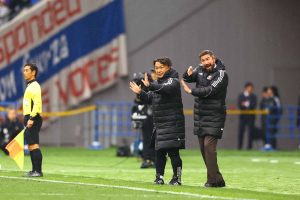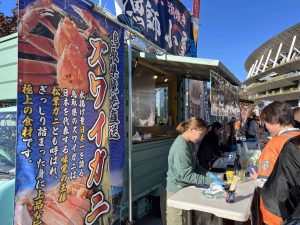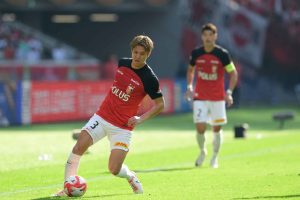
Scholz scored a penalty just before the end of the game, making it a draw with Verdy / photograph: Miki Sano
Why are Urawa Reds, the championship contenders led by a new manager from Norway, struggling for early form?
Urawa Reds, who were among the favourites to win the J1 league before the start of the season, have had a slow start to the new campaign.
In their opening match of the season on 23 February, Urawa lost 2-0 to fellow title hopefuls Sanfrecce Hiroshima. And in their second game against Tokyo Verdy on 3 March, they only managed to claim a draw thanks to a penalty by Alexander Scholz in a closing stage, over opponents who have just returned to J1 after a 16-year absence.
Having finished fourth last season, Urawa brought in Norwegian coach Per Mathias Høgmo ahead of the 2024 season. The former Norway national team manager was tipped to advocate an attacking style based on a 4-3-3 formation.
To embody this style of football, the club in Saitama aggressively reinforced their squad in the off-season, acquiring 2022 J1 top scorer Thiago Santana from Shimizu S-Pulse, dazzling winger Naoki Maeda from Nagoya Grampus, Ryoma Watanabe from FC Tokyo, Yusuke Matsuo returned after his loan spell at Westerlo in Belgium, Sweden international midfielder Samuel Gustafson from Häcken, and Norway international winger Ola Solbakken on a season-long loan from AS Roma.
However in the opening match, they struggled to build up against Michael Skibbe’s Hiroshima because of their high press and frequently lost the ball in their own half, leading to many short counter-attacks from Hiroshima. Although they had more ball possession, Urawa were forced to be back foot often and allowed Hiroshima to record 27 shots.
In the following game against Verdy, a lack of movement was also exposed.
New manager Høgmo, an admirer of Johan Cruyff, is trying to instill a Dutch-style 4-3-3 with fixed positions on the pitch. This approach enables the team to move the ball while players maintain their positions, using propulsion on both wings to breakthrough the sides.
However, even when they were able to get the ball in behind their opponents Urawa struggled to create gaps and couldn’t break down Verdy’s compact defensive block. Occasional switches of play by Gustafson encouraged the wingers to push forward, but it occurred only few times in 90 minutes.
The team’s deep defensive line was another reason why their attack did not work. The whole team was stretched longer and Thiago Santana was isolated up front. Their new striker only managed one shot and could not hide his frustration when he was replaced in the 61st minute.
Urawa pushed their opponents back with a lot of long balls in the closing stages of the game and were ultimately awarded a penalty and Scholz scored from the spot to equalize the tie.
Høgmo referenced performance of Koizumi and Ito as reason for ineffective attack
After the game, manager Høgmo said: “We lacked running behind the back line from our midfield, which is very important.”
The inside midfielders were Yoshio Koizumi and Atsuki Ito, a Japan international. The former is more attack-minded player and the latter is stronger in duels, and the lack of movement was not solely the fault of those two players.
How to move the ball and where to exploit space – the team looked to lack common understandings of these two key aspects.
After two games in the new season, Urawa recorded one draw and one defeat. They have also scored only one goal, Scholz’s penalty, which is a disappointing return for an attacking style.
Reasonably, it takes time to understand a new manager’s philosophy – something Urawa also experienced first hand last season.
Last year when Polish manager Maciej Skorża took over the team, Urawa also started slowly, losing two games in a row. However, they soon came to life with four consecutive wins and even won the AFC Champions League. Although Urawa finished fourth in the league, they achieved a certain level of success.
Ordinarily, the Skorża regime should have continued, but the coach left the team after only one year due to family reasons. The board did a good job in bringing in a proven coach, Høgmo, to replace him, but the team had to be built from scratch again.
Furthermore, Solbakken’s condition has not improved, not being available for the opening two games. With everybody fit Urawa’s true strength may be revealed, but they cannot afford to rest on their laurels as their early-season success or failure could well determine their chances of winning the championship.
Can one of the favourites, led by an ambitious Norwegian manager, correct their problems and turn things around? Or will they continue to lose? The next test will come against Hokkaido Consadole Sapporo in the third round on 10 March.


